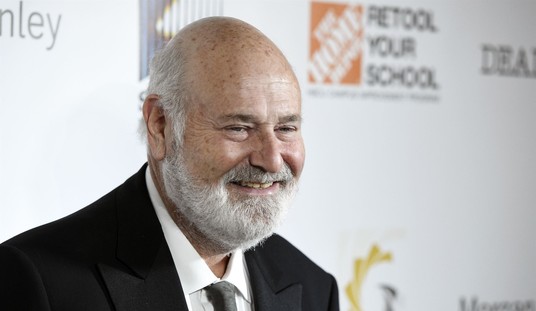–Image Credit: Associated Press
Los Angeles officials have decided manmade plastic can help their city’s water supply survive the effects of manmade global warming.
Ironic, no?
Whether it’s the best or the worst of life, it always rolls downhill, and so have 96 million plastic balls rolled into the Los Angeles Reservoir, creating what one supporter of the plan told the New York Times is “the world’s largest ball pit.”
The last 20,000 of the balls were rolled into the reservoir Aug. 10, completing the $34.5 million project.
L.A. officials are hoping this will help the city deal with a true water crisis. Four years of drought have dried their water supply nearly to the bone. City engineers promise the black, plastic shade balls will slow evaporation and algae growth by blocking sunlight and UV rays.
The balls should also block sunlight-triggered chemical reactions, keep birds and other wildlife out of the water, and protect the water from rain and wind-blown dust.
The L.A. Reservoir is not the only facility of its kind holding water for the people of Los Angeles, but it is the biggest. Its 3.3 billion gallons of water is enough to supply the city for three weeks.
Los Angeles Mayor Eric Garcetti wrote on his Facebook page the balls now floating on top of the 175-acre reservoir could save 300 million gallons of water a year.
Garcetti called the 96 million balls a “cost-effective investment” that should also bring the L.A. Reservoir into compliance with new federal water-quality mandates.
The shade balls are expected to save the city $250 million when compared to other comparable tools considered to save the water of the Los Angeles Reservoir.
As simple as it seems, it is also a fresh idea. The Los Angeles Department of Water and Power is the first utility company to use plastic balls for water-quality protection.
But rolling the balls into the L.A. Reservoir was not Garcetti’s first choice. City engineers did look at other options.
Those alternatives included splitting the reservoir into two with a bisecting dam; and installing two floating covers that would have cost more than $300 million.
However, it didn’t take a state-of-the-art computer system to show making plastic balls and floating them on the water, while almost childlike in its simplicity, was incredibly inexpensive.
City officials said that at $0.36 each the shade balls require no construction, parts, labor or maintenance aside from occasional rotation.
“Shade balls are a great example of how engineering meets common sense,” Marcie Edwards, the general manager of the Los Angeles Department of Water and Power, said. “Shade balls are an affordable and effective way to comply with regulations, and helps us continue to deliver the best drinking water to our customers.”
Brian White, a now-retired Los Angeles Department of Water and Power biologist, was the first person to think of using shade balls for water quality. The idea came to him when he learned about the application of “bird balls” to keep birds out of the ponds along airfield runways.
“In the midst of California’s historic drought, it takes bold ingenuity to maximize my goals for water conservation,” said Garcetti. “This effort by Los Angeles Department of Water and Power is emblematic of the kind of the creative thinking we need to meet those challenges.”
California Gov. Jerry Brown has been sounding the alarm for nearly two years regarding the state’s water crisis, which he blames on global warming.
While standing on dry grass where he said there should have been five feet of snow in April, Brown directed the State Water Resources Control Board to implement mandatory water reductions in cities and towns across California to reduce water usage by 25 percent.
Brown said the water savings should amount to approximately 1.5 million acre-feet of water over nine months, or nearly as much as is currently in Lake Oroville.
In addition, he issued an executive order mandating that cities and towns across California reduce water use by 25 percent. It was the first time in California’s history that mandatory restrictions on water use have been implemented statewide.
He also said the California Energy Commission would support “promising new technology” to make the state more water efficient, through state incentives.
Silicon Valley dreamers and capitalist environmentalists must have been drooling over the prospects of fattening their bank accounts, but then L.A. started rolling balls downhill.
Plastic balls made at a cost of 36 cents apiece may not be the kind of groundbreaking technology Gov. Brown had in mind, or Silicon Valley dreamed of, but Mayor Garcetti is convinced it will work.
But still, one California resident tweeted he thinks the 96 million balls are floating atop the Los Angeles Reservoir only to serve as inspiration for new Twitter jokes.










Join the conversation as a VIP Member